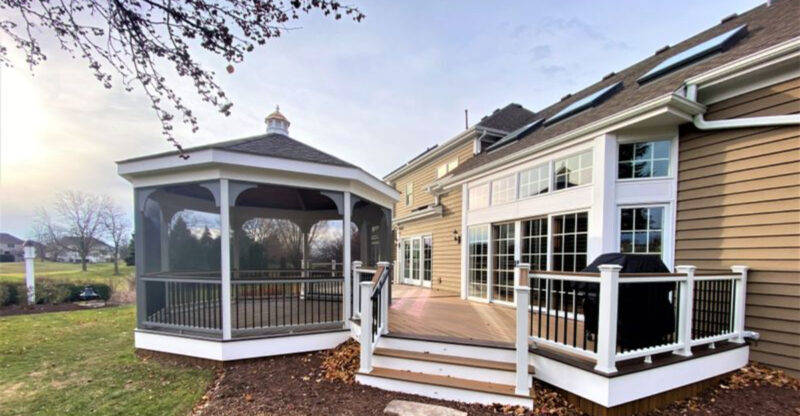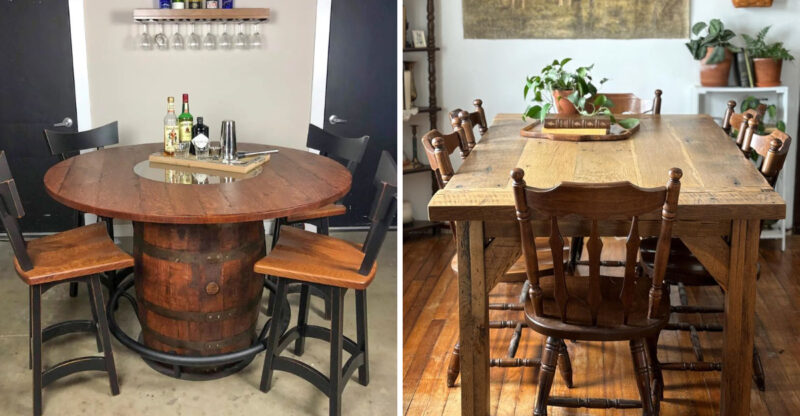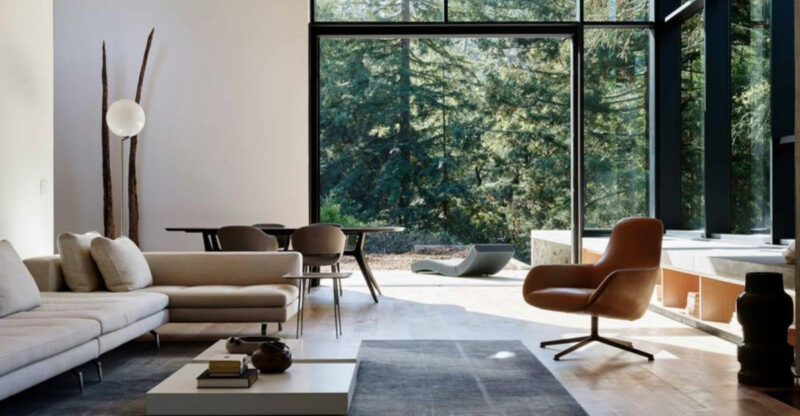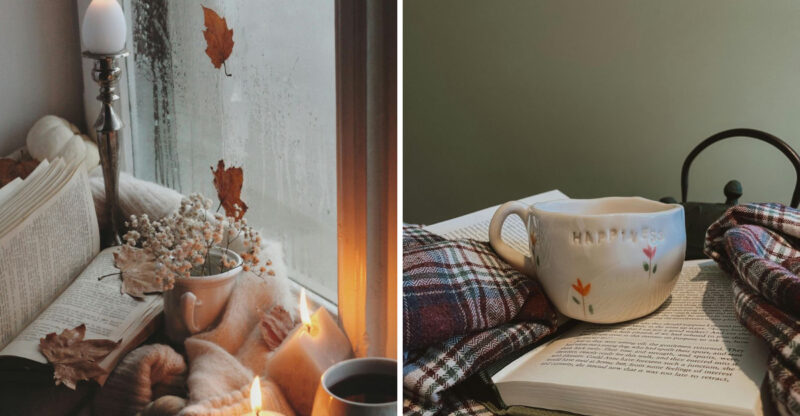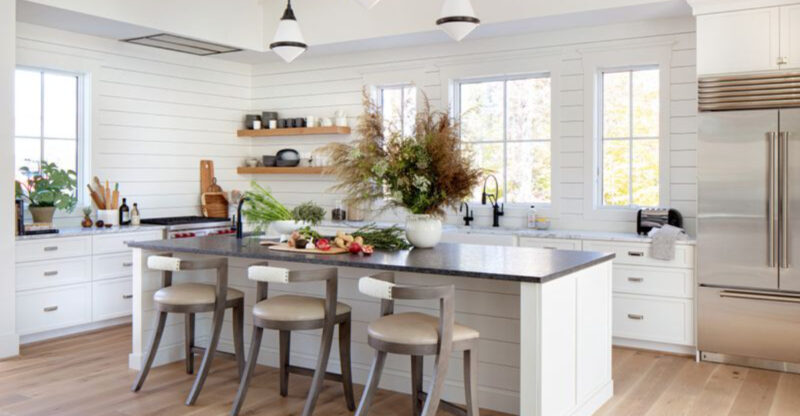16 Ways You Can Incorporate Bold Industrial Style In Your Home
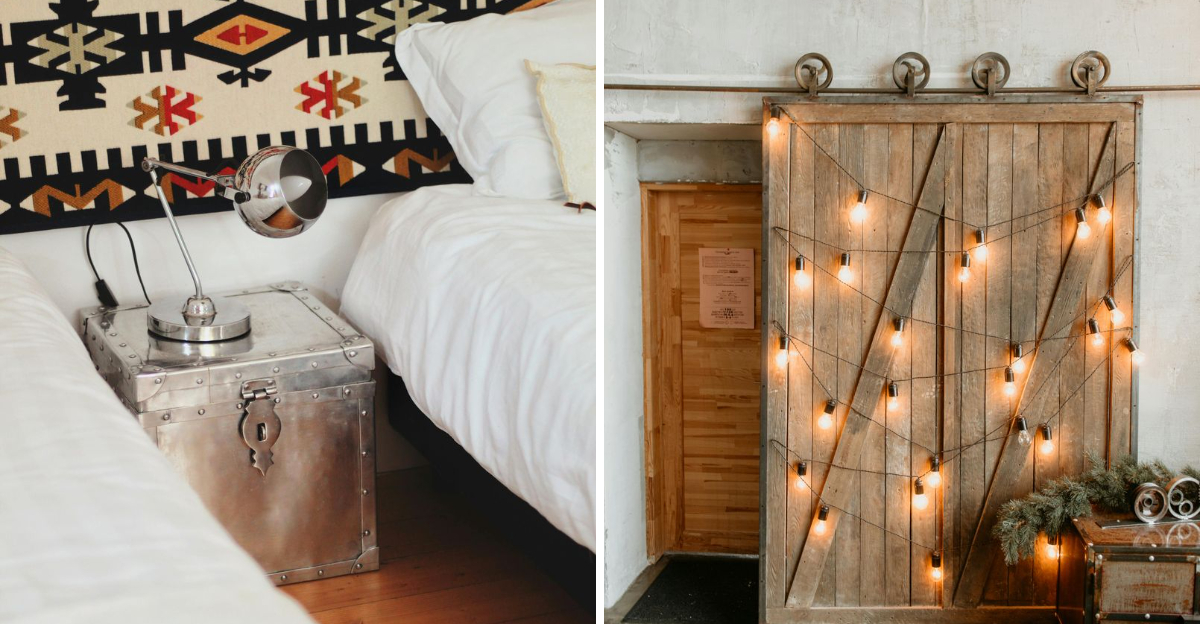
Looking to give your home that raw, edgy industrial vibe that’s been taking the design world by storm?
Industrial style combines rugged aesthetics with functional elements, creating spaces that feel both modern and timeless. The beauty of this design approach is that you can go all-in or just add subtle touches to transform your living space. Here are twenty ways to make it happen.
The information shared here is for inspiration and general guidance. Individual results may vary depending on space and design choices.
1. Expose Those Brick Walls
Nothing screams industrial chic like a raw brick wall standing proud in your living space. If you’re lucky enough to have brick hiding behind drywall, consider exposing it for instant character.
Don’t have real brick? No problem! Quality brick veneer panels offer a convincing alternative that’s easier to install. The unfinished, slightly imperfect look adds warmth and texture that perfectly balances industrial harshness.
2. Install Metal Shelving Units
Metal shelving units deliver that workshop vibe while providing practical storage. Look for pipe-style shelves or units with metal frames and wood planks for an authentic industrial look.
These shelves work wonderfully in kitchens displaying cookware, in living rooms holding books, or in bathrooms storing towels. The best part? They’re typically sturdy enough to handle heavy items, making them as functional as they are stylish.
3. Hang Edison Bulb Fixtures
The warm amber glow of Edison bulbs creates instant industrial atmosphere. These vintage-inspired lights feature visible filaments that become design elements themselves.
Try them in pendant form over kitchen islands, as bare bulbs in bathroom vanities, or grouped in different heights above dining tables. Their soft illumination adds a cozy contrast to harder industrial elements, proving that factory-inspired design can still feel inviting.
4. Choose Weathered Leather Furniture
Aged leather furniture brings warmth and comfort to industrial spaces. A distressed leather sofa or armchair softens metal and concrete elements while maintaining the rugged aesthetic.
Look for pieces with visible stitching, natural wear marks, and sturdy metal legs or frames. Cognac, dark brown, or black leather typically works best in industrial settings. These pieces age beautifully, developing more character over time – just like the factories that inspire this style.
5. Display Mechanical Objects As Art
Old gears, pulleys, and industrial machinery parts make fascinating wall art or tabletop sculptures. Scour flea markets and salvage yards for authentic pieces with interesting shapes and patinas.
Mount large gears on walls, display smaller mechanisms under glass cloches, or arrange collections on open shelving. Mechanical treasures tell stories of craftsmanship and innovation. Their intricate details and worn finishes create conversation pieces that celebrate industrial heritage.
6. Invest In Metal-Frame Furniture
Furniture with exposed metal frames captures industrial style perfectly. Look for coffee tables, dining sets, or bed frames featuring raw steel, iron, or aluminum structures.
The contrast between metal frames and wood, glass, or upholstered components creates visual interest. Pieces with visible bolts, rivets, or welding marks score extra industrial points! Many manufacturers now create new pieces with deliberate distressing.
7. Use Reclaimed Wood Liberally
Reclaimed wood brings warmth and history to industrial spaces. Each plank tells a story through knots, nail holes, and weathered grain patterns. Incorporate it in dining tables, headboards, floating shelves, or accent walls.
The natural imperfections beautifully balance industrial’s harder elements. Many architectural salvage shops offer beams and planks from old factories and barns – perfect for authentic industrial character.
8. Install Pipe Fixtures In Bathrooms
Transform ordinary bathrooms into industrial showcases with exposed pipe fixtures. Wall-mounted faucets with visible plumbing create instant workshop vibes. Black iron or copper pipes make striking towel bars or shower curtain rods.
The unexpected industrial elements feel both vintage and modern simultaneously. Many manufacturers now create pipe-inspired fixtures that offer the aesthetic without plumbing modifications.
9. Embrace Open Shelving
Open shelving showcases both beautiful items and industrial architecture. Replace upper cabinets with pipe-mounted or floating metal shelves for an uncluttered workshop feel.
Display everyday items like dishes, glassware, or books as part of your decor. The key is organizing with purpose – group similar items, incorporate plants, and leave breathing room. This approach celebrates both function and form, a cornerstone of industrial design philosophy.
10. Paint With Industrial Colors
Industrial color palettes draw from factory environments – think deep grays, rusty reds, and muted blues. Clors create perfect backgrounds for metal and wood elements.
Consider charcoal walls with white trim for dramatic contrast, or navy blue with brass accents. Even painting just one accent wall can transform a space’s feel. These colors often have undertones that change throughout the day.
11. Hang Oversized Factory Lighting
Large-scale pendant lights reminiscent of factory fixtures make dramatic statements. Look for metal dome shades, cage-protected bulbs, or pulley systems that allow height adjustment.
They work particularly well above dining tables, kitchen islands, or in entryways with high ceilings. Substantial size anchors spaces while providing excellent task lighting. Many vintage warehouse lights have been rewired for modern homes.
12. Create An Industrial Room Divider
Open concept homes benefit from industrial-style room dividers that define spaces without blocking light. Consider steel-framed glass partitions, rolling factory doors, or metal grid screens.
These dividers maintain visual connection between areas while creating distinct zones for different activities. The structural elements themselves become architectural features. Some clever homeowners repurpose factory conveyor belts or machinery guards as one-of-a-kind dividers with fascinating histories.
13. Display Plumbing And Ductwork
Instead of concealing building systems, industrial style celebrates them as design elements. Exposed ductwork, plumbing pipes, and electrical conduits add authentic industrial character to ceilings and walls.
In new construction, work with builders to leave these elements visible. In existing homes, consider removing drop ceilings to reveal structural components. Painting exposed systems matte black creates a cohesive look.
14. Choose Utilitarian Textiles
Industrial style favors hardworking textiles with visible texture and minimal patterns. Canvas, linen, wool, and leather in neutral tones complement metal and wood elements perfectly.
Look for fabrics with visible weaves, subtle stripes, or ticking patterns reminiscent of factory uniforms and grain sacks. Avoid fussy details like ruffles or elaborate trims. Simple stitching and raw edges maintain the utilitarian vibe.
15. Mount Industrial-Style Tracking
Sliding door hardware inspired by factory equipment adds movement and functionality to spaces. Black metal tracking systems work beautifully for room dividers, closet doors, or pantry entrances.
The exposed wheels, tracks, and mounting hardware become decorative features themselves. Many systems now come in kit form, making installation more accessible for homeowners. The contrast between warm organic material and cool metal creates perfect industrial balance.
16. Add Raw Metal Accents
Small metal accessories inject industrial style without major commitments. Consider iron candle holders, steel bookends, or zinc planters as easy entry points. Look for pieces with visible welding marks, rivets, or patina.
Mixed metal finishes create depth and interest – try combining black iron, raw steel, and warm brass or copper. These accents work particularly well against softer backgrounds, creating textural contrast.

